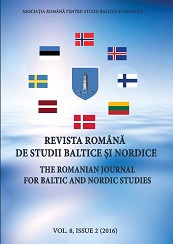An overview of the Copenhagen school’s approach to security studies: constructing (in)security through performative power
An overview of the Copenhagen school’s approach to security studies: constructing (in)security through performative power
Author(s): Luiza Maria FilimonSubject(s): Politics / Political Sciences, Social Sciences
Published by: Asociatia Romana pentru Studii Baltice si Nordice
Keywords: the Copenhagen School; critical security studies; securitization; performativity; threat assessment;asymmetric warfare;
Summary/Abstract: Security has generally posed a challenge to those who have attempted to reach an ideal, comprehensive and encompassing definition of the concept. Orthodox perspectives have mainly focused on the state as a “harbinger” of security that defends its territory and citizens against external enemies through the acquisition of military grade weapons. Neorealist theorist, Stephen Walt defines security as “the study of threat, use, and control of military force” (1991, 212). Since security is a seemingly self-explanatory concept, it has also been rather underdeveloped to the point that International Relations theorist Barry Buzan argues that before the ‘80s, “conceptual literature on security” was rather neglected if not, a sorely absent field of inquiry (1983, 3-4). Buzan himself, along with Ole Wæver and Jaap de Wilde, proposed a new research agenda for security as evidenced in the book: “Security: A New Framework for Analysis” (1997). These authors are regarded as the main representatives of what today we refer to as the Copenhagen School of Security Studies. The present article provides an analysis of the Copenhagen School’s “good practices” on security and securitization as speech acts (Mutimer 2016, 93) and intersubjective processes (de Graaf 2011, 11), in order to address the performative power behind the contemporaneous security architecture and the security practices of threat construction.
Journal: Revista Română de Studii Baltice şi Nordice
- Issue Year: 8/2016
- Issue No: 2
- Page Range: 47-72
- Page Count: 26
- Language: English, Romanian

